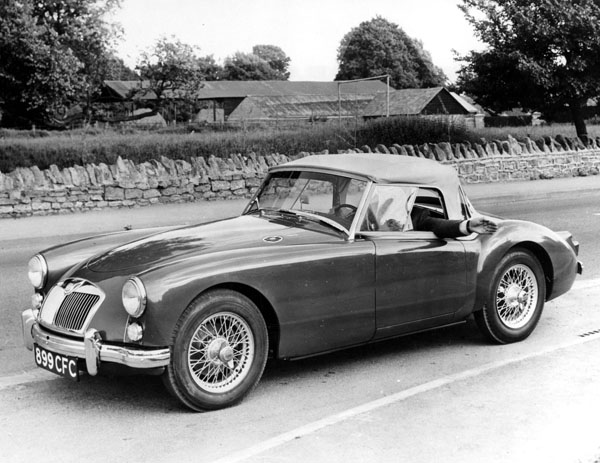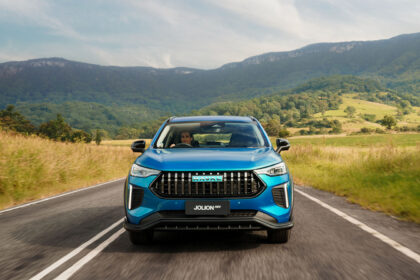Produced during the years 1955 to 1962 the MGA was the first new MG produced after the merger of Nuffield and Austin. Not only was the A the first modern post-war MG, it was also the first to use the corporate mechanical parts: much of the drive train was derived from the Austin A50 saloon. Its attractive pinched-waist body was derived from a special TD raced at Le Mans and was based on an stiff box-section chassis, the last used on an MG.
Although some said it was too strong and unnecessarily heavy, it was certainly rigid. There was nothing novel about the suspension, which comprised front wishbones and leaf-spring rear beam axle, yet the handling of the A was more than a match for its contemporaries, Triumph and Austin Healey. Whilst bolt-on steel wheels were supplied as standard, centre-lock wires were available as an option.
The 1489 c in-line B series four engine developing 54 kW was uninspiring, but 152 km/h was respectable, as was the potential 9.4 litres per 100 km and it was reliable, cheap to build and simple to work on. The simple dash featured basic instrumentation and a large steering wheel.
It was joined by a handsome coupe version in 1956 and in 1958 by the exciting twin-cam with its Harry Weslake-designed twin overhead-camshaft 1588 c engine. With 81 W, top speed went up to 177 m/h. It was a highly desirable property but the engine – based on a modified B series block – had a poor reliability record, with a reputation for burning pistons.
Today, enthusiasts have the twin-cam’s engine problems beaten. It was available in coupe and roadster form and could be recognised by its handsome Dunlop centre-lock lightweight steel wheels. The coupe version had well balanced styling but was not as popular. Dunlop disc brakes on all wheels were standard. High prices and its dodgy reputation kept sales low. BMC killed this most exotic of MGs in 1960.
By that time the standard MGA had become the 1600, with 59 kW, disc front brakes and genuine 160km/h ability. The only outward difference, aside from badging, was the separate rear indicators. Optional was the DeLuxe, with the standard pushrod engine but the disc brakes and centre-lock wheels of the slow-selling twin-cam.
The final MkII 1600 of 1961 had a slightly bigger bore 1622 c engine, pushing the power output to 64 W. You can identify a MkII by its recessed front grille and horizontal rear lights. Production finished in 1962, giving way to the unitary MGB, certainly a more modern MG than the A but not such a pretty one.
In total 101,081 MGAs were built.









